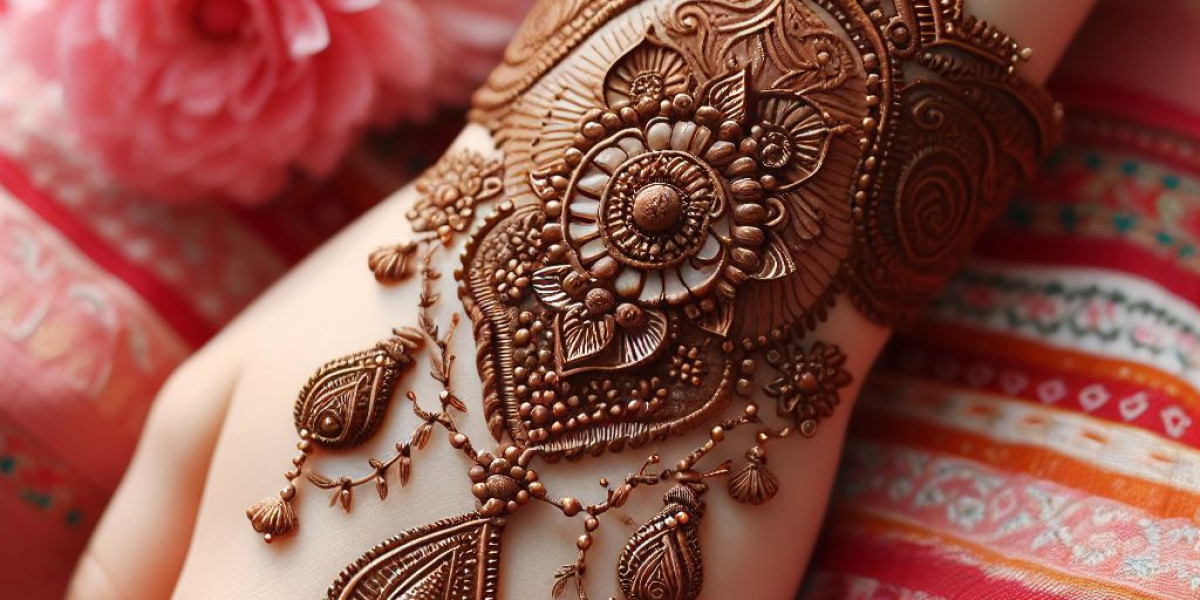When it comes to adorning your skin with a simple bel mehndi design, selecting the right type of henna is as crucial as the design itself. Henna, a natural dye made from the leaves of the Lawsonia inermis plant, has been used for centuries to create intricate temporary tattoos, especially in cultures around South Asia, the Middle East, and Africa. The allure of a simple bel mehndi design lies not only in its elegance and subtlety but also in its ability to complement the natural beauty of the wearer's skin. However, the beauty and longevity of the design significantly depend on the type of henna used and the care taken post-application.
Choosing the Right Type of Henna
The first step in ensuring your simple bel mehndi design looks vibrant and lasts longer is to choose the right type of henna. Primarily, there are two types of henna available in the market: natural henna and synthetic (black) henna. Natural henna, derived purely from plant extracts, yields a reddish-brown color and is considered safe for use on the skin. In contrast, synthetic henna, which contains chemicals like para-phenylenediamine (PPD), can cause severe allergic reactions and should be avoided.
For a simple bel mehndi design, natural henna is the ideal choice. It not only ensures safety but also provides a rich, deep color that naturally fades over time. When selecting natural henna, look for fresh, high-quality henna powder or paste. Fresh henna has a fine texture and a strong, earthy smell, indicators of its potency and the vividness of the color it will produce.
Preserving the Henna Design
Once you've applied your simple bel mehndi design with the right type of henna, preserving its beauty becomes the next priority. The longevity of a henna design can be significantly extended with proper care. Here are some effective tips to maintain your mehndi:
Keep the Henna on Your Skin as Long as Possible: After applying the henna, let it dry naturally and try to keep it on your skin for at least 6-8 hours, or even overnight. The longer the henna paste stays on the skin, the darker the stain will be and the longer it will last.
Avoid Water: After removing the henna paste, avoid contact with water for as long as possible, ideally for the next 24 hours. Water can interrupt the oxidation process of henna, leading to a lighter stain.
Apply Natural Oils: Applying a light coating of natural oils like coconut oil, olive oil, or a mixture of lemon juice and sugar, can help seal the design and protect it from fading quickly. These natural substances not only moisturize the skin but also enhance the stain's richness.
Avoid Exfoliating: To ensure the longevity of your simple bel mehndi design, avoid scrubbing the area or using exfoliating soaps. Exfoliation accelerates the skin's natural renewal process, leading to a quicker fading of the henna design.
Wear Gloves When Doing Chores: If your mehndi design is on your hands, wearing gloves while doing chores that involve water or chemicals can protect the design from premature wear.
In conclusion, a simple bel mehndi design not only beautifies your skin but also carries a rich cultural significance. Choosing the right type of natural henna and following essential aftercare tips can greatly enhance the design's vibrancy and longevity. By paying attention to these details, you can enjoy your beautiful henna design for an extended period, allowing it to be a testament to both tradition and personal style.








